Salento is a land that fascinates tourists not only for its natural beauty, such as the sea and beaches of Torre Lapillo and the Bauxite quarries of Otranto, but also for its rich artistic, architectural and historical heritage. Located in the Italian region of Puglia, Salento attracts with its millennia-old history. In the 8th and 7th centuries BC, Salento emerged as part of the Greek colonies in southern Italy, forming part of Magna Graecia. In this context the Salento land witnessed a mix of cultures over the centuries, from Messapian to Greek and Roman influence. This phenomenon was characterized by the presence of Greek colonies that carried on the culture, language and traditions of ancient Greece through southern Italy. In the history of Salento, Greek cities such as Taranto and Gallipoli played a significant role as important commercial and cultural centers. Later, during the Roman period, it continued to prosper as an integral part of the Roman Empire, with important settlements and monuments that still bear witness to its past. Salentinian Greece in Salento still experiences the influence of colonization through language, still presenting Italy’s Greek language minority. The dialect spoken in the community is known as Apulo-Greek or Grico dialect. To this day, clear evidence remains of ancient Greece and the Roman Empire through ruins, archaeological sites and important artifacts housed in the most important museums there. If you are interested in exploring Magna Graecia in Salento, here are 10 places not to be missed!
Numerous Mycenaean pottery artifacts, the result of trade with the Greeks, have been found on the seabed in the Porto Cesareo area. Near the inlet of Torre Chianca, at a depth of 4 meters and 80 meters from the coast, lie five Roman cipollino marble columns dating back to the 2nd century AD. This stone was commonly used as a decorative element in ancient Rome. The columns, about 9 meters long and between seventy cm and one meter thick, were part of a shipment from the Karystos quarries at the southern end of the island of Euboea. At the time they were found in August 1960, they were partially rough, with barely sketched grooves and covered with encrusting organisms such as green algae and sponges. Nothing remains of the wreck that carried them today. Some artifacts, including amphorae and bricks, are preserved at Taranto’s Aragonese Castle. The site is accessible by sea by boat or by land starting from the inlet adjacent to the Tower and swimming the 80 meters that separate it from the coast.
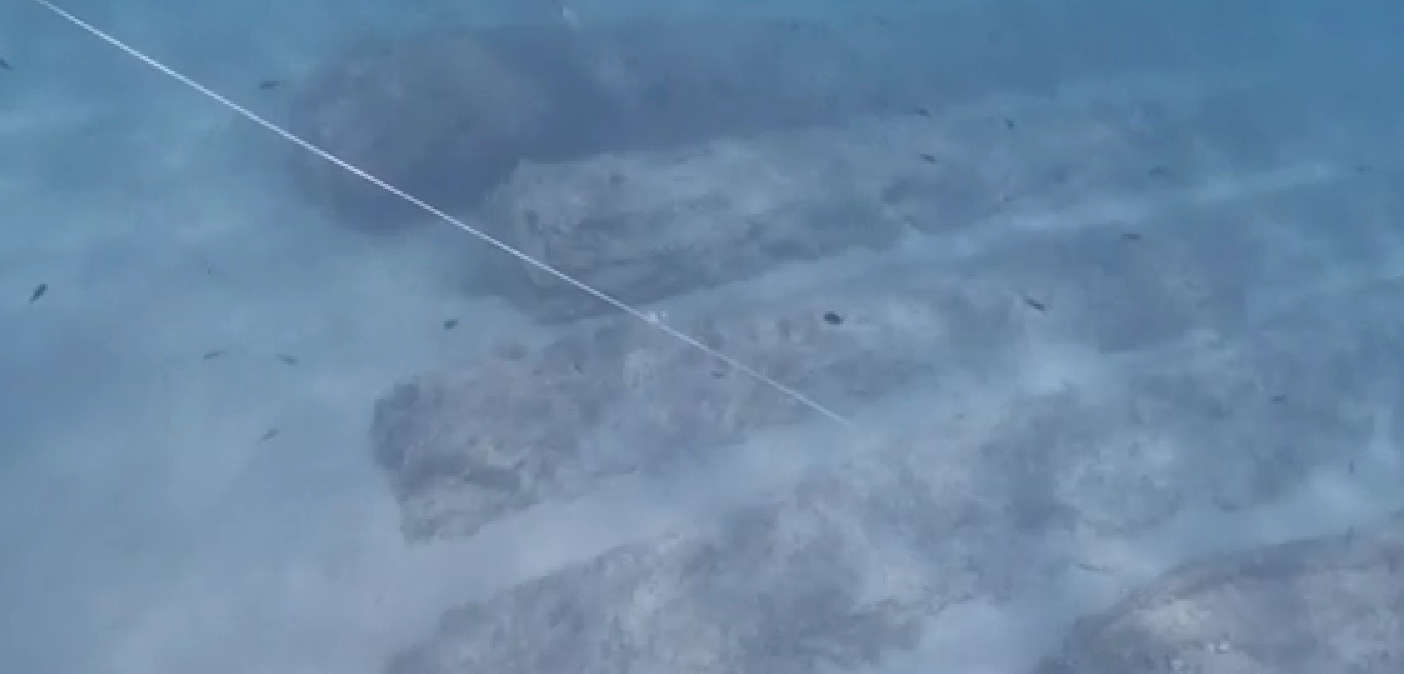
The Romanamphitheater stands in the heart of Lecce, specifically in Piazza Sant’Oronzo. Its history is rooted in the first decades of the first century AD, when Emperor Octavian Augustus decided to enrich Lupiae, ancient Lecce, at the time a peripheral city of the Roman Empire, with a large Amphitheater. Its ruins were unearthed in the early 20th century, during major urban redevelopment work in the city. Only about a third of the original structure is visible today, while the rest lies beneath the square and surrounding buildings. Archaeological excavations were started in 1900 under the leadership of archaeologist Cosimo De Giorgi and lasted until 1940. It is presumed that the Amphitheater was built in the Augustan period, with an elliptical plan that measured a total of about 102 x 82 meters, capable of seating between 12,000 and 14,000 people. Today, the amphitheater represents tangible evidence of Lecce’s glorious Roman past, attracting numerous visitors fascinated by its history and architectural majesty.
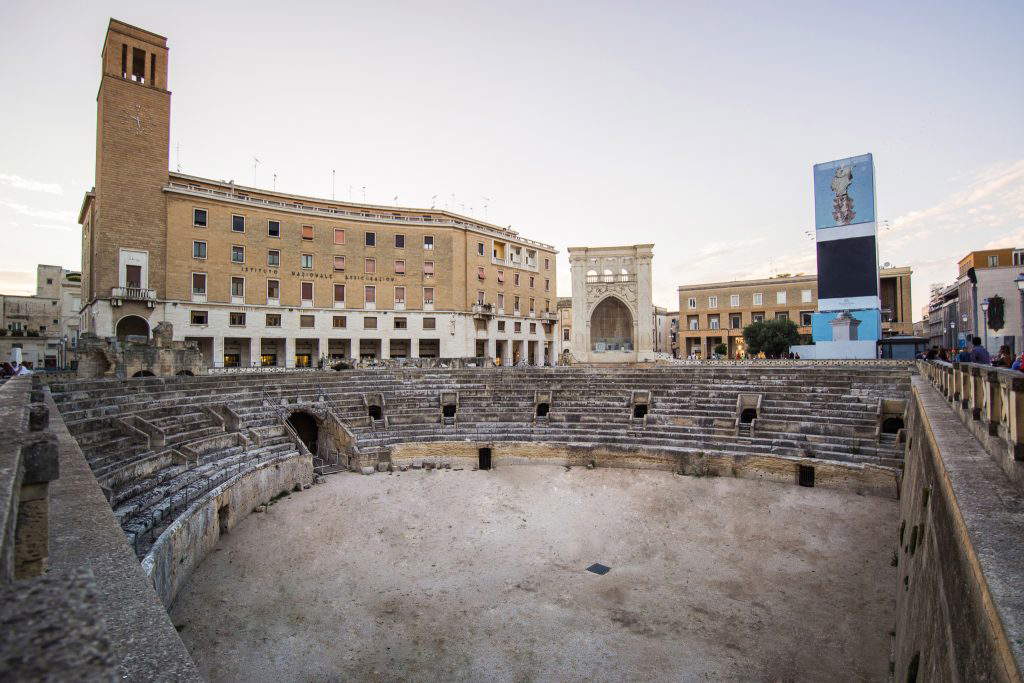
Ancient Rudiae, 3 km southwest of Lecce, is a major archaeological site on the Salento peninsula, active from the 7th century BC until the late Roman period. Famous for being the birthplace of Quintus Ennius (239-169 BC), it was described as early as the 16th century by Antonio De Ferraris, who denounced the damage caused by agriculture. The site remained abandoned for a long time, with discontinuous finds until the second half of the 19th century. Excavations conducted between 1957 and 1959 brought to light hypogea, tombs, Attic and Italiote ceramics, and Messapian and Roman epigraphs, forming the Provincial Museum of Lecce. Field investigations unearthed two Hellenistic hypogea, sections of paved roads and monumental buildings from the Republican period. In the 1980s, the Ministry established the Rudiae Archaeological Park after the expropriation of Fondo Acchiatura. Since 2018, in collaboration with the Apulia Region and the Municipality of Lecce, the Rudiae Archaeological Park can be visited with the Roman Amphitheater, built in the early second century AD during the reign of Trajan.
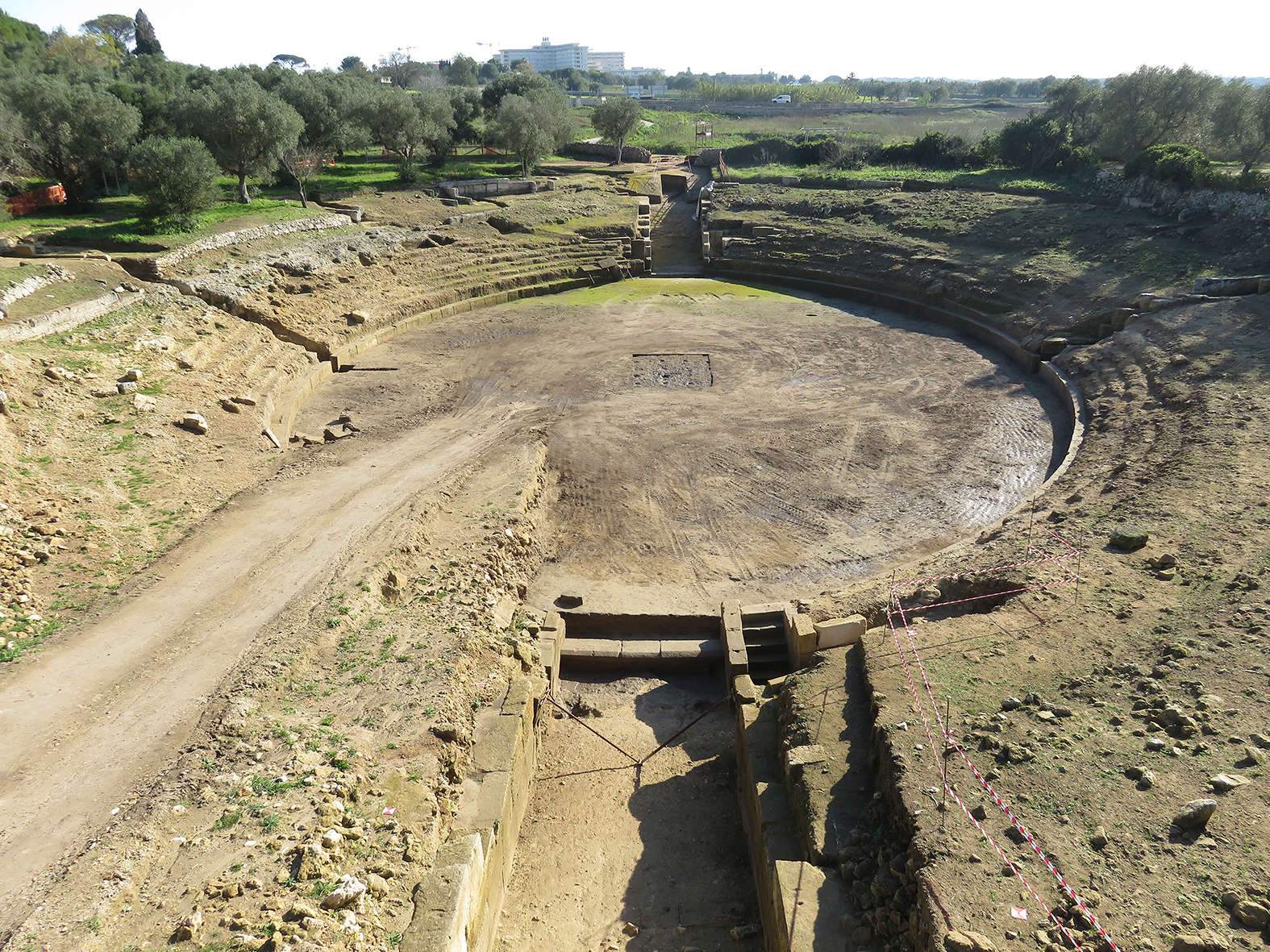
Located on the iapigio promontory, the sanctuary of Athena in Castro, in the province of Lecce, overlooks the sea and offers a view of the Cerauni Mountains of the Albanian coast and the islands opposite Corfu. This site, mentioned by Virgil in the Aeneid during Aeneas’ landing in Italy after the destruction of Troy, has been the subject of excavations that have revealed extraordinary ancient sculptural works, including a cult statue of the goddess wearing a Phrygian helmet, symbolic of her Trojan origin as that of Aeneas. In the fourth century B.C., a workshop of Taranto sculptors was active in Castro, whose creations, along with votive offerings, pottery and inscriptions, testify to the city’s importance along the Salento coast during its heyday. In July 2015, a group of archaeologists uncovered a mutilated female statue, datable to the fourth century BC. It is speculated that she may depict the goddess Minerva or Artemis, judging by the features of her clothing. Although missing her head and body parts, the statue shows traces of purple color and was found three meters below the ground in downtown Castro.
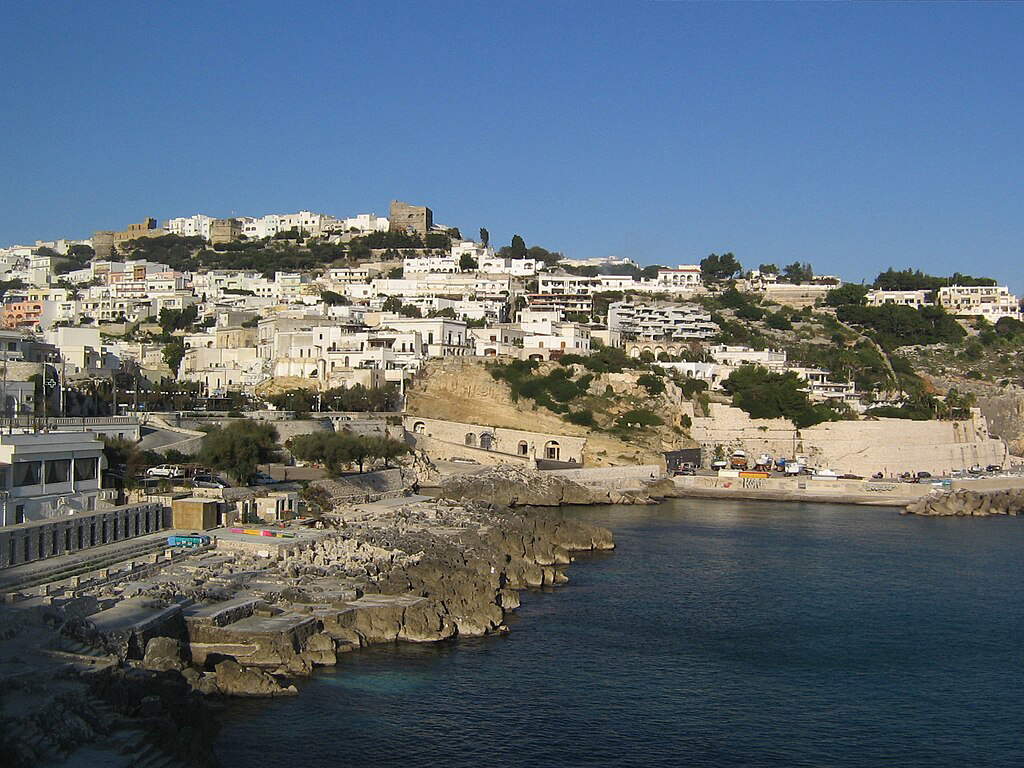
During road resurfacing work carried out between 2002 and 2005 in the Piazzetta di Castromediano in Lecce, a complex archaeological stratification emerged from the subsoil. This stratification reveals traces of frequentations dating back to the Messapian, Roman and medieval ages, up to the 19th century, when some buildings were demolished to create the square. At the most significant archaeological evidence, three stained-glass windows have been made in order to allow visitors to glimpse what has emerged from underground. Dating from the Republican age, 2nd-1st century B.C., a road axis and a production facility for oil, the trappeto(trapetum). Also discovered was an oil cistern(lacus olearius) more than two meters deep that could hold about 800 liters of oil, equipped with a ladder and a settling well at the bottom. This complex system dates back to the first century B.C., a period when Salento was an important center of oil production, exported in amphorae produced in Brindisi and Lecce and destined for the main Mediterranean markets. The Roman oil mill found is of great scientific interest, being the first discovery of its kind south of Foggia.
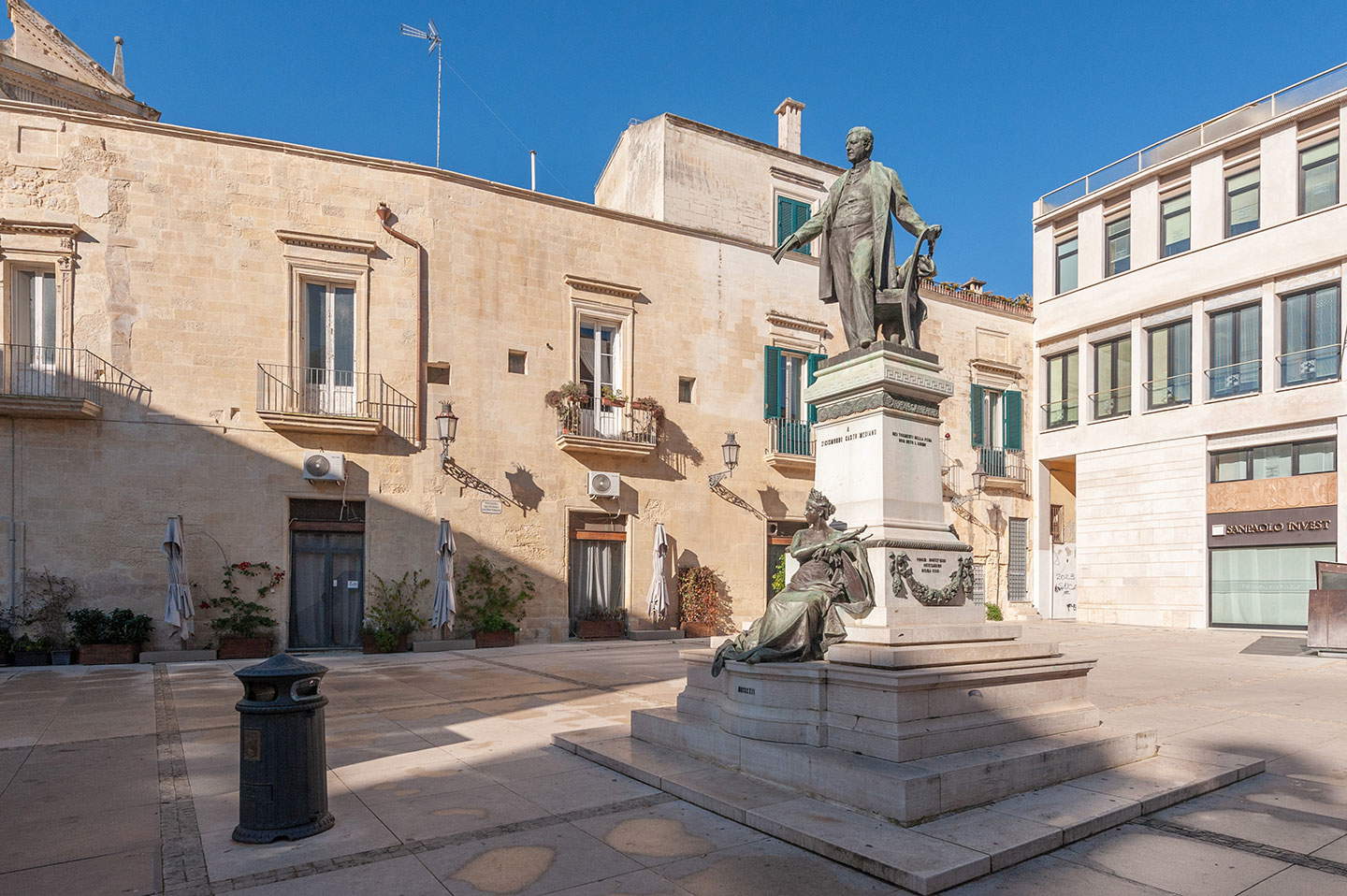
Stratigraphic excavations conducted under the 19th-century floor of Palazzo Vernazza in the heart of Lecce revealed ruins dating from the Iron Age (9th-7th centuries B.C.) and the 4th-3rd centuries B.C. Archaeologists unearthed the remains of a shrine dedicated to the goddess Isis and Serapis, dating back to the 1st century BC. - 1st century AD, with an adjoining Purgatorium, the ritual pool in which devotees immersed themselves to receive a symbolic baptism with the waters of the Nile for purification of body and spirit, before accessing the sacred mysteries. In southern Italy, there are only two temples dedicated to the Isiac cult (Pompeii and Benevento), and the presence of this shrine had only been speculated on the basis of some documents mentioning merchants heading to ancient Lupiae to bring a gift to the eastern deity, who was also worshipped by the Romans after the conquest of Egypt. Among the various valuable finds uncovered during excavations in the basement of Palazzo Vernazza are an oscillum (votive disk hung between columns) depicting Isis and Anubis, a sistrum (a sacred musical instrument), a situla (a type of metal vase), and a statue from the Augustan age depicting Aphrodite, likened to the Egyptian goddess. These findings offer valuable evidence of the richness and complexity of religious and cultural practices in ancient Lupiae.
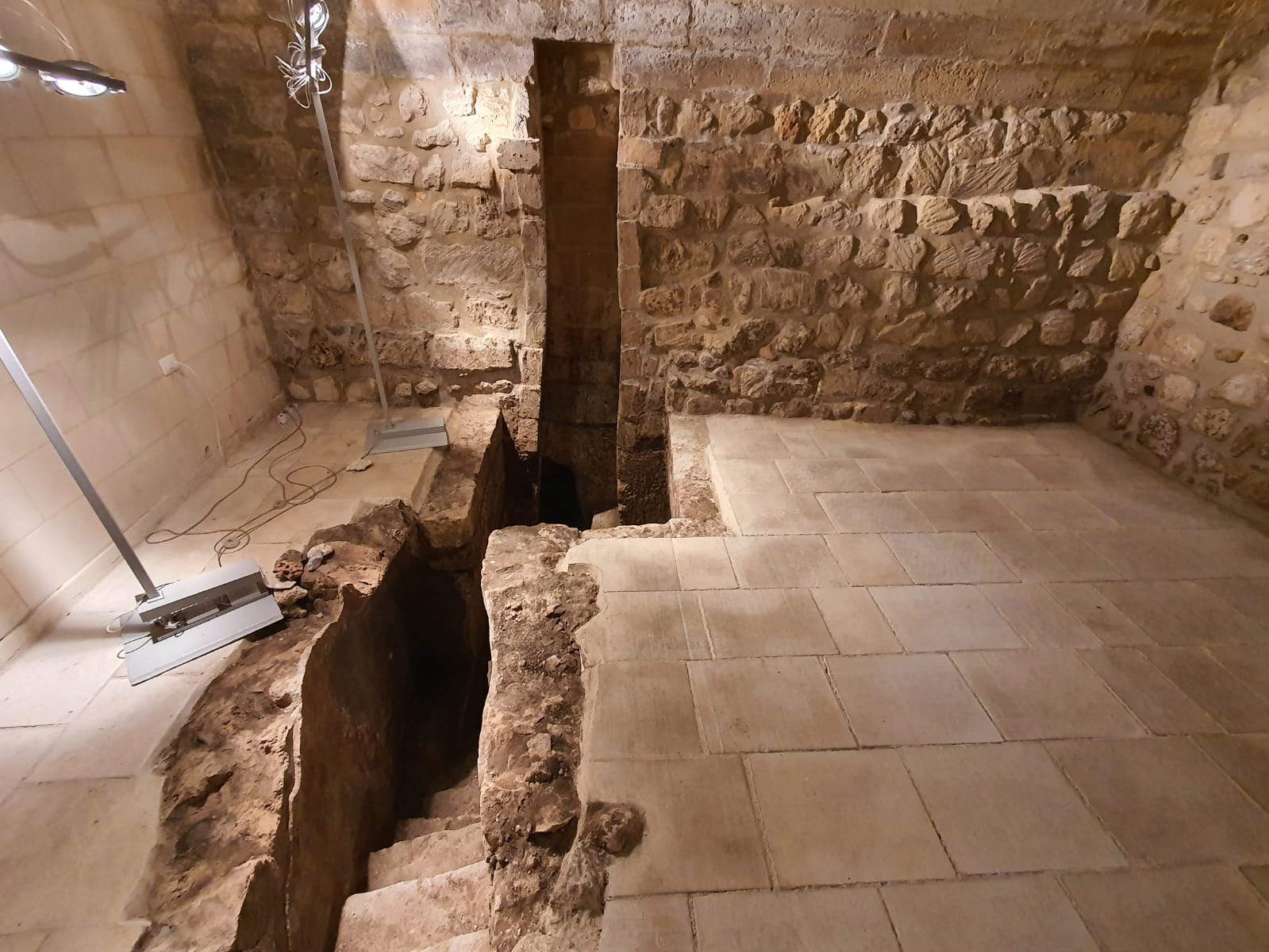
Taranto, Syracuse and Corinth are the only cities in the world that preserve remains of a Greek temple from the first half of the 6th century BC. The Doric temple in Castello Square had been known since the 18th century, when the two columns now fully visible were incorporated into the Oratory of the Holy Trinity. Today only two columns and the base of a third remain, but the original temple must have extended about 50 meters, with probably 17 columns on one side and 6-8 columns on the other. The temple’s construction occurred during the period of the establishment of the power of Taras, present-day Taranto within Magna Graecia, of which the city was the capital. However, the construction of the temple also coincided with the urban reorganization of Taranto, with the Acropolis located in the old city and the Polis in the suburb. Although the Doric temple is better known as the temple of Poseidon, it is more likely that it was dedicated to a female deity. Thus, last century’s tradition of identifying it as a temple of Diana is probably more accurate.
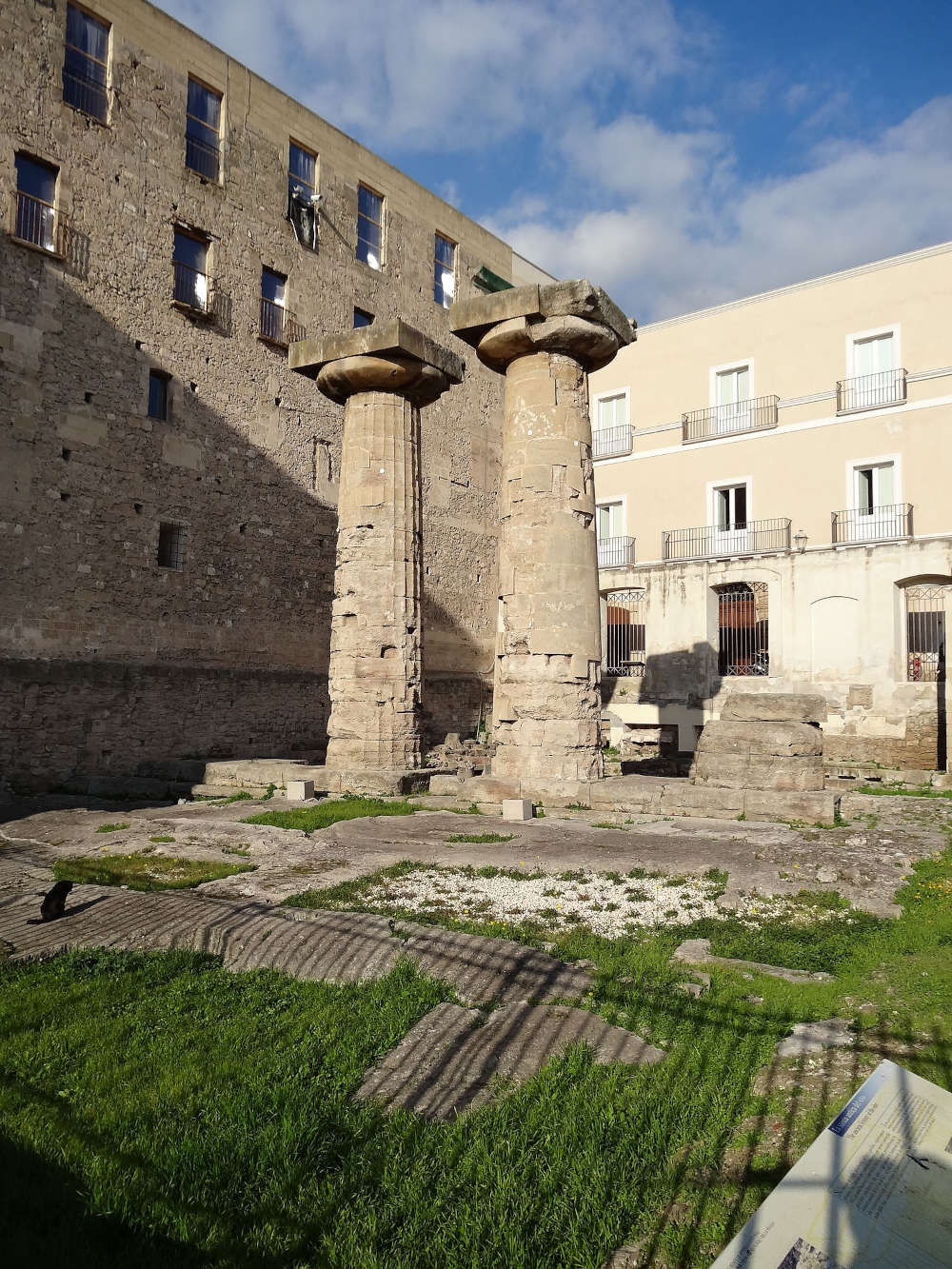
Taranto’s National Archaeological Museum, among the most relevant in Italy, was founded in 1887 and is housed in the former Convent of the Alcantarine Friars, built shortly after the mid-18th century. From Prehistory to the founding of Taranto, through the Roman conquest, the late antique and medieval city, and the Ricciardi collection: the MArTA’s exhibitions outline an extensive and fascinating historical period. Sections devoted to Hellenistic funerary culture and the Roman and medieval periods were opened to the public in 2007 and 2013; the new National Archaeological Museum of Taranto completed the layout of the upper floor, dedicated to the prehistory and protohistory of Apulia, and the city and necropolis of Taranto from the Archaic and Classical periods, which opened in July 2016. The MArTA also holds precious treasures and evidence from the past that tell the story of the city and its territory. Some of these artifacts have become fundamental points of reference for visitors, such as: the terracotta female Head from the 4th century B.C., the Zeus of Ugento from 530 B.C., the marble Head of Heracles from the 1st century B.C. and the basalt Statue of the god Thot from the 4th century B.C.
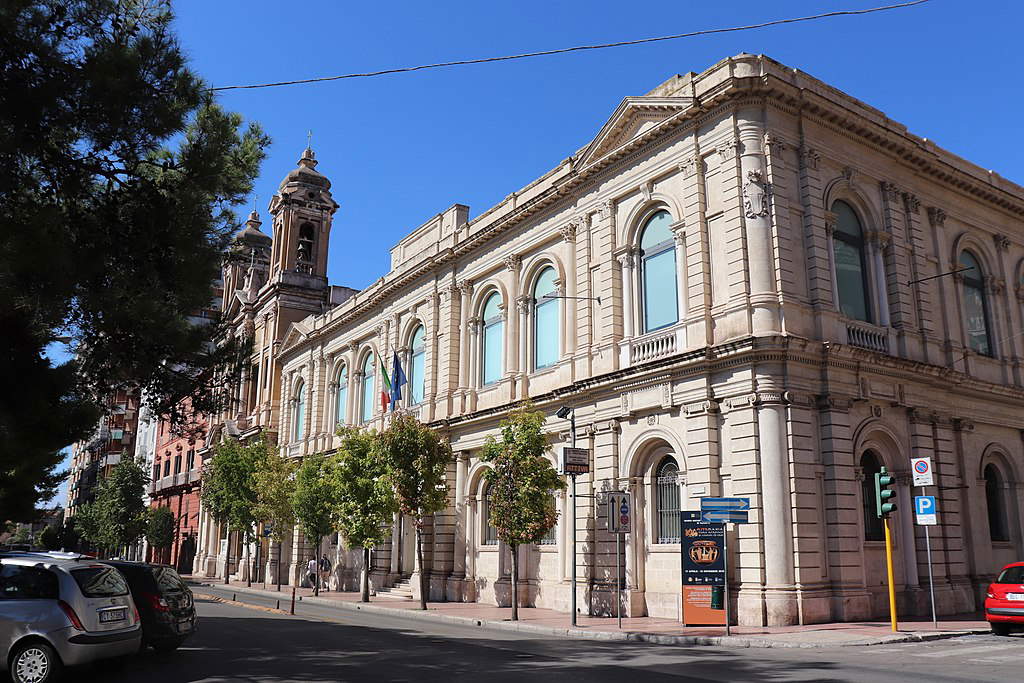
The Siponto Archaeological Park is of great importance because it testifies to the prestige of ancient Siponto, present-day Foggia, a Roman colony since 194 B.C. and one of the main ports of Regio II, as well as the seat of one of the largest dioceses in the region. After the port silted up and two major earthquakes in 1223 and 1255, Siponto was abandoned and the inhabitants moved to the new city founded by King Manfred, son of Emperor Frederick II of Swabia, called Manfredonia or, under Angevin rule, Sypontum Novellum. The remains of the three-aisled early Christian basilica with central apse and mosaic floor testify to the importance of the diocese. Valuable mosaic floors dating from the construction of the basilica in the 4th century AD and its subsequent renovation in the following century can be seen inside the Medieval Basilica of Santa Maria Maggiore, a pivotal example of Apulian Romanesque architecture, erected in the late 11th and early 12th centuries. Starting in 2016, the Archaeological Park of Siponto was home to the project Where Art Reconstructs Time, an innovative wire mesh installation by Lombard artist Edoardo Tresoldi, which recalls in form the last phase of the ancient early Christian basilica.
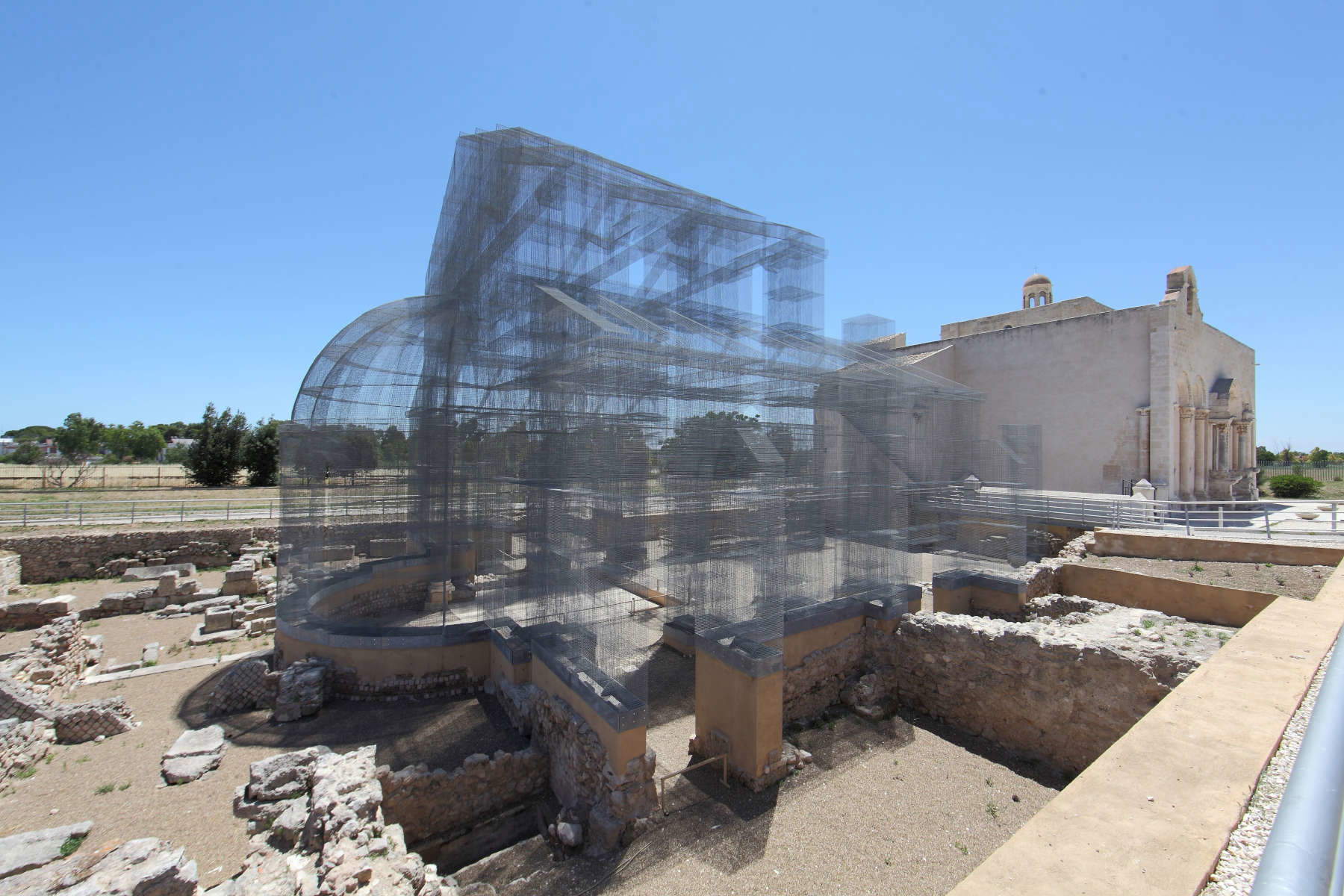
The MAR, Archaeological Museum of Castro aims to spread knowledge of the exceptional findings made during the excavations that brought to light the Sanctuary of Athena in Castro, celebrated by Virgil in the third book of theAeneid, narrating the Trojan hero’s arrival in Italy. The excavations, which began in 2000, have already returned numerous artifacts and information about the history of Castro and the Mediterranean. In 2009, an exhibition at the Aragonese Castle highlighted the importance of the finds, prompting the creation of an Archaeological Museum dedicated to the history of Castro, from prehistoric origins to the present, and to the sanctuary of Athena-Minerva, which gave the city the name Castrum Minervae. The centerpiece of the MAR is the limestone statue of Athena, with the bust making it possible to reconstruct a sculpture over three meters high, intended for inside the temple. Although inspired by classical models such as Phidias’ Parthenos, the statue reveals an artistic expression typical of the artisans of Taranto, active in the 4th century BC.
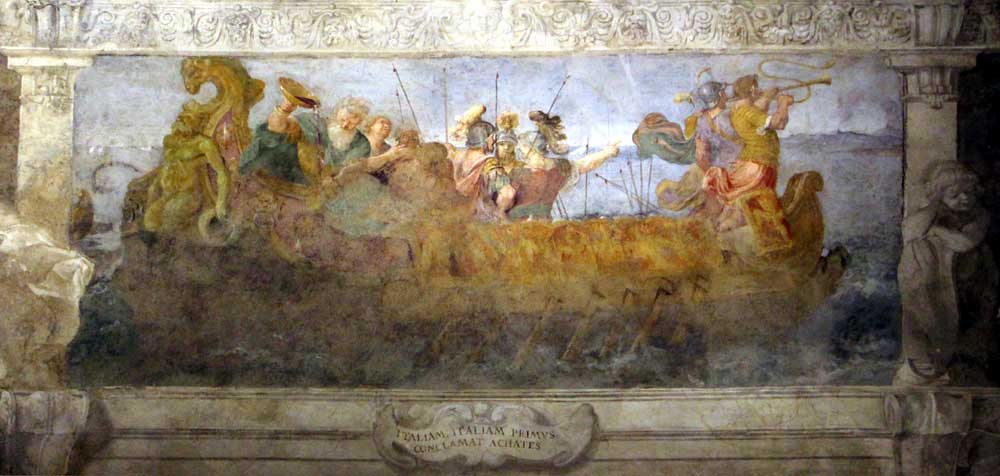
 |
| Magna Graecia in Salento, what to see: 10 places to visit |
Warning: the translation into English of the original Italian article was created using automatic tools. We undertake to review all articles, but we do not guarantee the total absence of inaccuracies in the translation due to the program. You can find the original by clicking on the ITA button. If you find any mistake,please contact us.